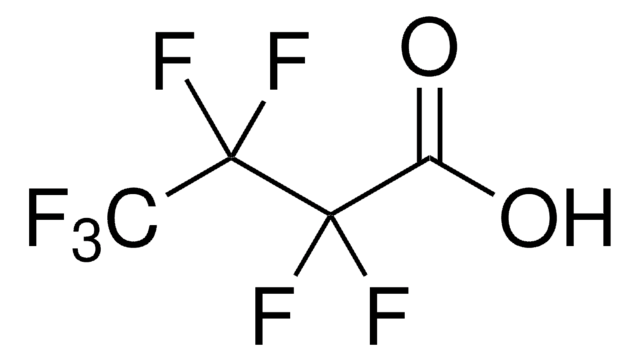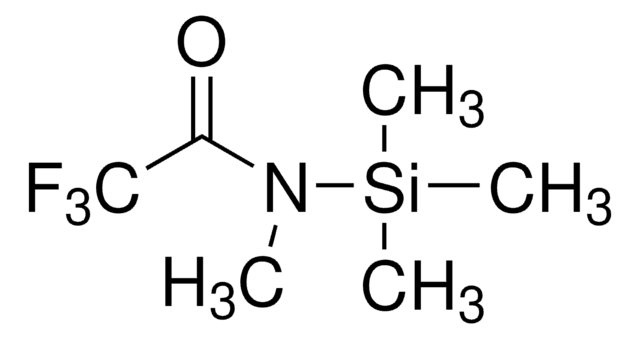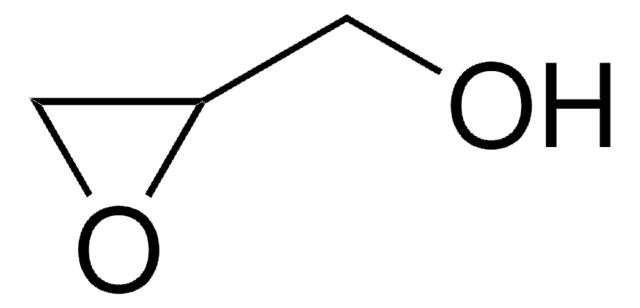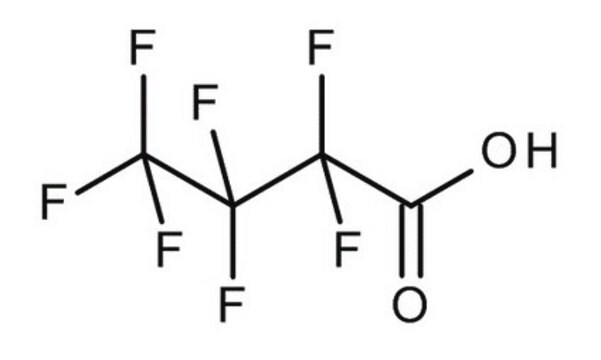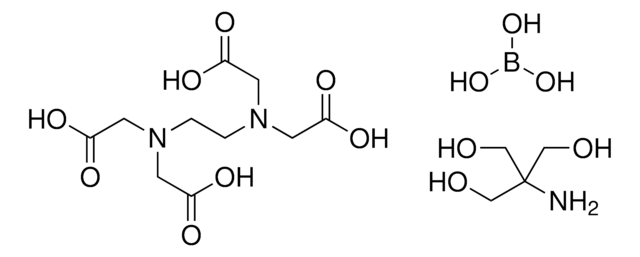Kluczowe dokumenty
77253
Heptafluorobutyric anhydride
for GC derivatization, LiChropur™, ≥99.0%
Synonim(y):
HFAA, HFBA, Perfluorobutyric anhydride
About This Item
Polecane produkty
klasa czystości
for GC derivatization
Poziom jakości
Próba
≥99.0% (GC)
≥99.0%
Formularz
liquid
jakość
LiChropur™
przydatność reakcji
reagent type: derivatization reagent
reaction type: Acylations
metody
gas chromatography (GC): suitable
współczynnik refrakcji
n20/D 1.287 (lit.)
bp
108-110 °C (lit.)
mp
−43 °C (lit.)
gęstość
1.674 g/mL at 20 °C (lit.)
1.674 g/mL at 20 °C
ciąg SMILES
FC(F)(F)C(F)(F)C(F)(F)C(=O)OC(=O)C(F)(F)C(F)(F)C(F)(F)F
InChI
1S/C8F14O3/c9-3(10,5(13,14)7(17,18)19)1(23)25-2(24)4(11,12)6(15,16)8(20,21)22
Klucz InChI
UFFSXJKVKBQEHC-UHFFFAOYSA-N
Szukasz podobnych produktów? Odwiedź Przewodnik dotyczący porównywania produktów
Opis ogólny
Zastosowanie
Opakowanie
Komentarz do analizy
Inne uwagi
Informacje prawne
Hasło ostrzegawcze
Danger
Zwroty wskazujące rodzaj zagrożenia
Zwroty wskazujące środki ostrożności
Klasyfikacja zagrożeń
Skin Corr. 1B
Kod klasy składowania
8A - Combustible corrosive hazardous materials
Klasa zagrożenia wodnego (WGK)
WGK 3
Temperatura zapłonu (°F)
Not applicable
Temperatura zapłonu (°C)
Not applicable
Środki ochrony indywidualnej
Faceshields, Gloves, Goggles, type ABEK (EN14387) respirator filter
Wybierz jedną z najnowszych wersji:
Masz już ten produkt?
Dokumenty związane z niedawno zakupionymi produktami zostały zamieszczone w Bibliotece dokumentów.
Klienci oglądali również te produkty
Nasz zespół naukowców ma doświadczenie we wszystkich obszarach badań, w tym w naukach przyrodniczych, materiałoznawstwie, syntezie chemicznej, chromatografii, analityce i wielu innych dziedzinach.
Skontaktuj się z zespołem ds. pomocy technicznej
